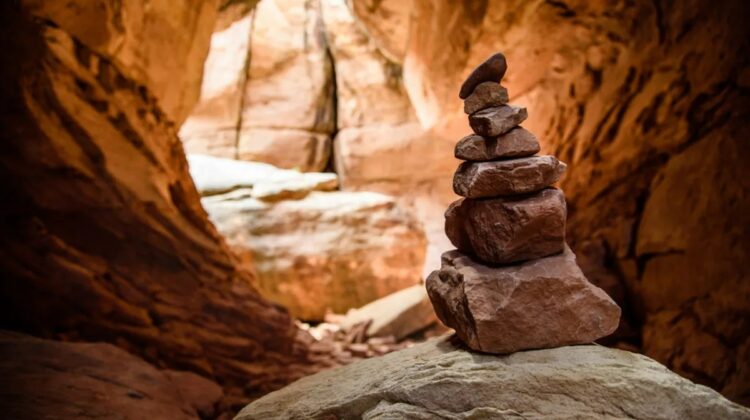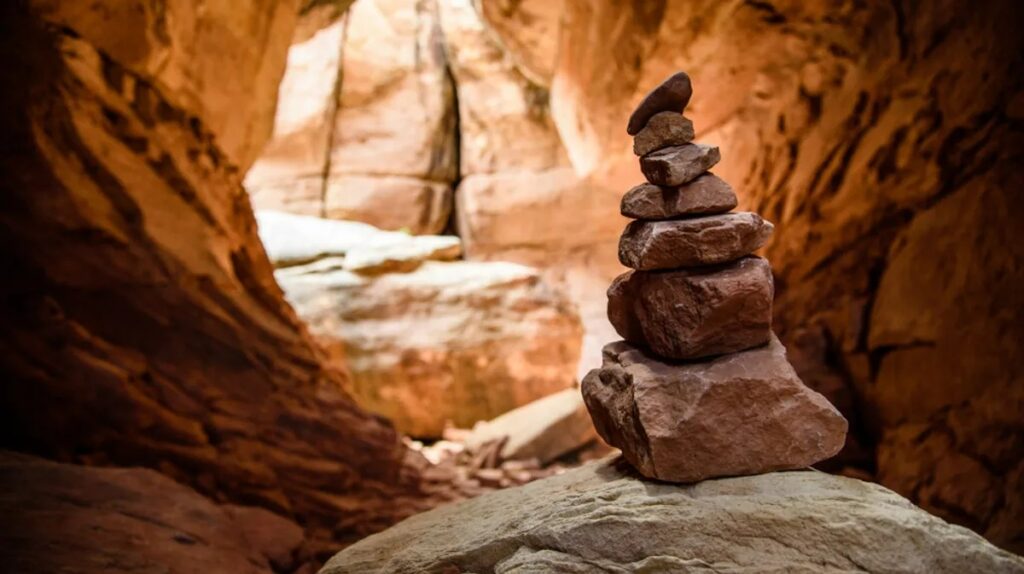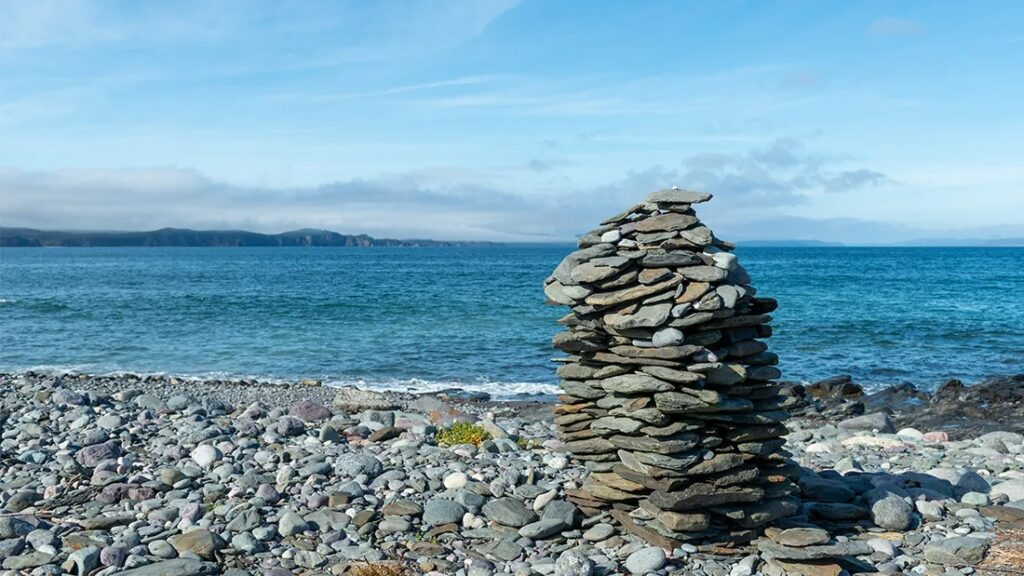
Hiking enthusiasts and nature lovers, picture this: You’ve embarked on a challenging trek, determined to conquer the heights as part of your New Year’s resolution. The view from the summit promises to reward your effort, but as you reach the pinnacle of the trail, you encounter a curious sight – a collection of stacked rocks, known as cairns, dotting the landscape. But what exactly are these rock formations, and why are they there?

Image Credit: Henry Africano/Shutterstock.com
What are rock cairns?
Cairns, derived from the Scottish Gaelic word meaning “heap of stones,” are not just random rock piles; they serve a specific purpose in the world of hiking. Traditionally, these rock formations are erected to guide hikers along challenging or convoluted paths, with famous trails like the Camino de Santiago featuring them prominently. In such cases, cairns become invaluable markers, ensuring travelers stay on the right track.
Moreover, cairns can foster a sense of community among hikers sharing the same journey, aiding those with less-than-ideal navigational skills. However, there’s a caveat. While purposeful cairns serve a noble cause, ornamental ones constructed haphazardly can lead to confusion, often directing people astray. This practice contradicts a fundamental principle of outdoor exploration: “Leave no trace.”
The Impact of Unauthorized Cairns
Why should you refrain from adding your own stone to these stacks? Well, the consequences extend beyond mere aesthetics. Moving a rock can disrupt the habitat of tiny creatures living beneath it, contributing to soil erosion, and potentially destroying microhabitats vital for local flora and fauna. What’s more, your well-intentioned addition might unintentionally cause an entire cairn to collapse, defeating its original purpose.
While some argue that cairns are essential for keeping hikers on track and protecting sensitive areas from overzealous explorers, unauthorized cairns have become so prevalent that even seasoned hikers find themselves befuddled by these pseudo-navigational markers. To ensure your journey remains on course, it’s prudent to carry reliable wayfinding tools like GPS devices or maps when planning extensive hikes.

The Origin of Rock Cairns
The concept of rock cairns has a rich history dating back to the late 19th century, attributed to the efforts of trail enthusiast Waldron Bates. His dedication to trail maintenance led him to write a handbook, establishing standards for such endeavors. Bates also introduced a distinctive style of cairn construction, now known as the “Bates cairn,” a far cry from the casual stacks we encounter today.

Respecting Nature’s Signposts
So, what should you do if you come across a rock cairn during your hike? The advice from the National Parks Service is clear – respect these natural signposts by leaving them untouched. Resist the temptation to tamper with them, build new ones, or add rocks to existing formations. Kicking them over is not only discouraged but could also be considered an act of vandalism, which is illegal.

In a world where millions of people explore the wonders of national parks and hiking trails, preserving these fragile ecosystems becomes paramount. As we venture into the great outdoors, let’s remember to tread lightly, respecting the balance of nature and leaving no trace but our memories of breathtaking landscapes and unforgettable journeys.

Leave a Reply